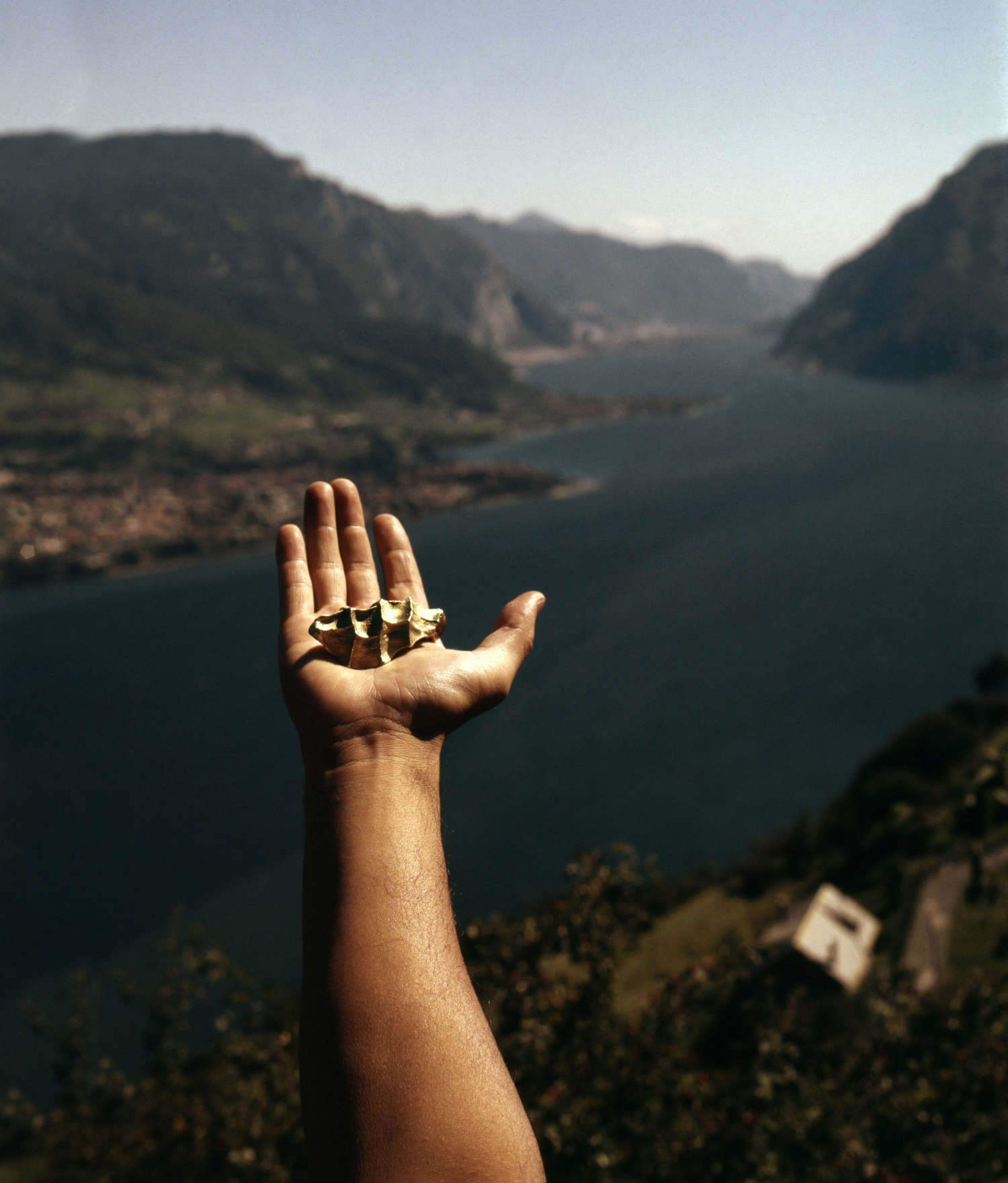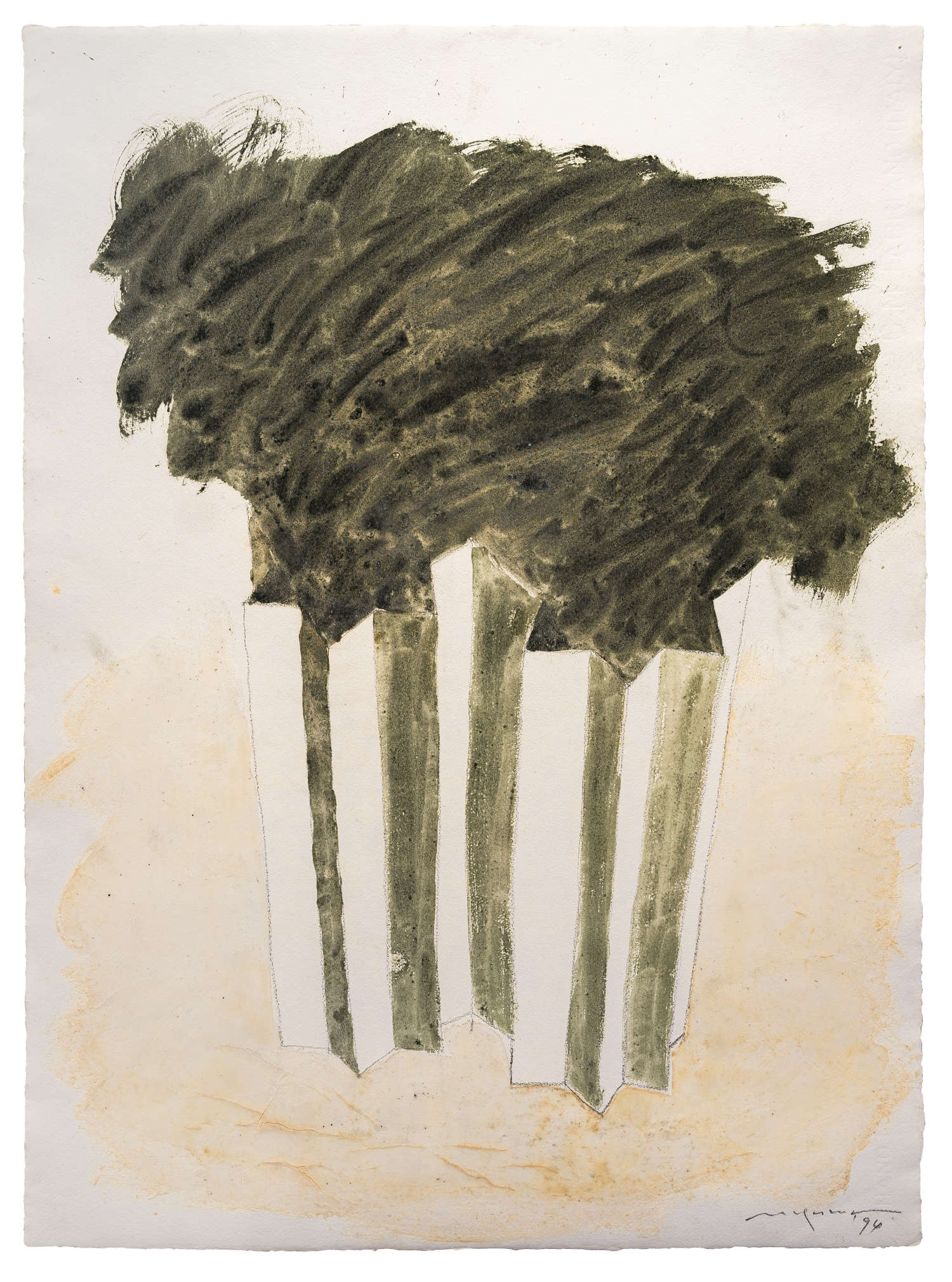The Building gallery in Milan presents a major retrospective devoted to Hidetoshi Nagasawa (Tonei, 1940 - Ponderano, 2018), one of the greatest artists working in Italy since the late 1960s. The exhibition, titled Hidetoshi Nagasawa. 1969 - 2018 and curated by Giorgio Verzotti, will be hosted in Building’s spaces from April 4 to July 20, 2024. Through a selection of about 40 works, the exhibition aims to trace a path that documents the entire span of the artist’s activity. It will start with videos that testify to his early performances, which in some aspects recall the operations of the coeval Land and Body Art. Next, it will explore the early sculptures, in which gesture has always been the primary matrix, and then arrive at the large-scale sculptures, often characterized by bold balances, which represent Nagasawa’s most typical feature.
Hidetoshi Nagasawa was Japanese, although he was born in Manchuria, in the People’s Republic of China. However, he became an adopted Italian and lived in our country for more than fifty years, moving to Milan in 1967. Here he came into contact with important artists of the time, including Enrico Castellani, Antonio Trotta, Mario Nigro and especially Luciano Fabro, with whom he founded the Casa degli Artisti in Milan.





In his early years in Italy, Nagasawa participated in the most radical research of the time, but later he devoted himself to specifically sculptural language, always with an innovative intention. One of his most significant contributions to the languages of Western art was his successful attempt to fuse Eastern and Western cultures, producing works of great formal value. His artistic practice reflected this fusion, helping to enrich the contemporary art scene with a unique and rich perspective.
The works presented by Building are imbued with the principle of Ma, a Zen philosophical concept that can be compared to the Western concept of interval or emptiness, not as a lack, but as a generative source of energy and form. An example of this is represented by Colonna (1972), a marble work developed on the floor, composed of differently colored segments from different places, separated by minimal but visible empty spaces. The artist described these spaces as places where the distance of their journeys and history closes.
In addition, two works on display declined the theme of the boat, a symbol of the journey, in different ways: Boat (1980-81), made of marble, earth and tree, and Boat (1983-85), made of brass and paper. These works reflect the idea of travel, a recurring theme in the works of Nagasawa, who, not coincidentally, came to Italy from Japan by bicycle.
The exhibition also includes a selection of the artist’s many works on paper and three previously unpublished marble sculptures, Hermaphrodite, Cube and Ribbon, all from 2012 and exhibited for the first time. Through this selection, the exhibition aims to highlight two distinctive characteristics of Nagasawa: his attention to the relationship between the artwork and architecture, and his almost utopian vision of sculpture that appears light and suspended in space, even when it reaches monumental dimensions.
Hidetoshi Nagasawa’s life has been marked by profound experiences since his birth on October 30, 1940, in Tonei, Manchuria, during the period of World War II, when his family was forced to leave the region because of the Soviet invasion. The theme of travel and reflection on the meaning of existence in time and space would deeply influence his art. After a troubled journey, the Nagasawa family arrived in Japan, where Hidetoshi began to show interest in painting and mathematics during his high school years. He continued his studies at Tama Art University in Tokyo, graduating with a degree in “Architecture and Interior Design” in 1963. During his university years, he was influenced by various avant-garde trends, such as Neo-Dada and the Gutaj Group art movement.


In May 1966, the artist embarked on an epic bicycle journey from the East to the West, crossing different nations and cultures, until arriving in Italy in 1967, settling in Milan. Here, he collaborated with the likes of Enrico Castellani, Luciano Fabro, Mario Nigro and Antonio Trotta. His artistic research, influenced by conceptual art, led him to exhibit in prestigious exhibitions such as the Venice Biennale starting in 1972.
In later years, Nagasawa explored plastic sensations and initiated a reflection on the meaning of sculpture, producing monumental works in materials such as gold, marble and bronze. Fascinated by the idea of metamorphosis, he also transformed paper into sculpture. In 1979, he was one of the founders of the Casa degli Artisti in Milan, an important space for the Milanese art scene. In addition to his artistic activity, Nagasawa taught at the Brera Academy of Fine Arts and the New Academy of Fine Arts (NABA) in Milan, as well as at Tama Art University in Tokyo. His contribution to contemporary art has been significant, with works exploring complex concepts such as body imprint, space and time. Hidetoshi Nagasawa died in 2018 in Ponderano, Biella province, leaving a lasting and significant artistic legacy.
Nagasawa participated in five editions of the Venice Biennale (1972, 1976, 1982, 1988, 1993), Documenta (1992), the Paris Biennale (1973) and the Middelheim Biennale (1975).His works have been shown in solo and group exhibitions held, among others, at Tramway, Glasgow; Yorkshire Sculpture Park, Wakefield; Municipal Museum of Fine Arts, Kyoto; The National Museum of Modern Art, Osaka; Metropolitan Art Museum, Tokyo; The Museum of Modern Art, Saitama; Städtische Kunsthalle, Düsseldorf; Louisiana Museum of Modern Art Culture Center, Humlebaek; Museum Moderner Kunst, Vienna; Fundació Pilar i Joan Miró a Mallorca, Palma de Mallorca; Galleria Civica di Arte Contemporanea, Trento; Peggy Guggenheim Collection, Venice; PAC-Padiglione d’Arte Contemporanea, Milan; Palazzo delle Esposizioni, Rome. Several of his works are held in private institutional collections internationally, including the Museum of Modern Art Kamakura & Hayama, National Museum of Modern Art Osaka, Takamatsu City Museum of Art and Iwaki City Art Museum (Japan); CaMusAC-Museum of Contemporary Art, Cassino; and MAMbo-Museum of Modern Art, Bologna.
 |
| Milan, from Building a retrospective on Hidetoshi Nagasawa with more than 40 works |
Warning: the translation into English of the original Italian article was created using automatic tools. We undertake to review all articles, but we do not guarantee the total absence of inaccuracies in the translation due to the program. You can find the original by clicking on the ITA button. If you find any mistake,please contact us.